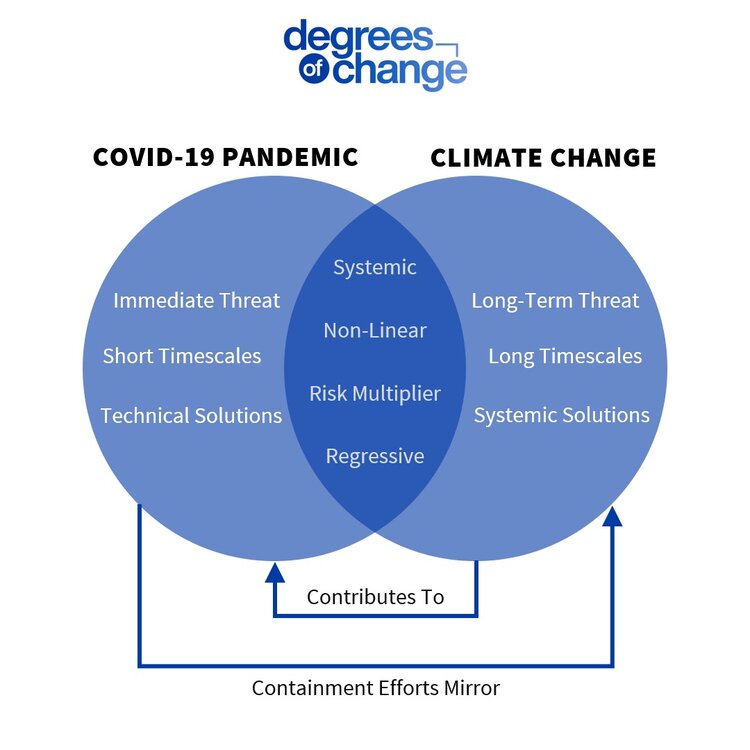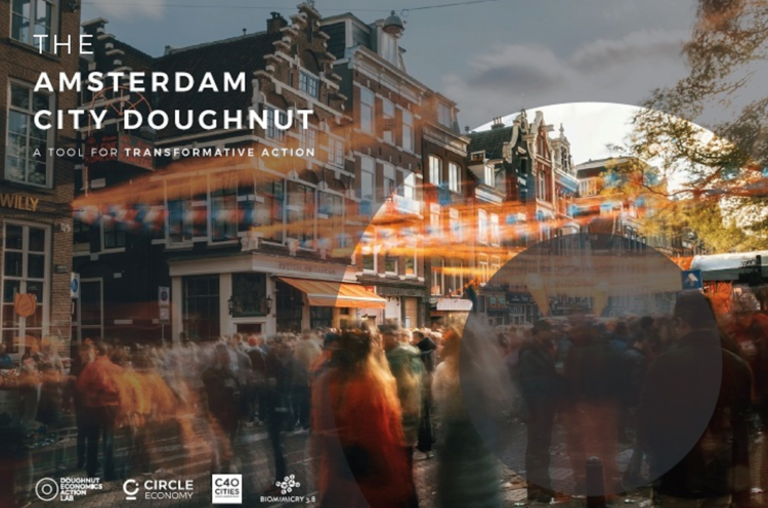In November 2019, if we were told that our lives would come to a standstill within three months, the idea would have sounded incredulous. A global crisis seemed to be a worry of the distant future, and not a concern of the present.
As the world recovers from COVID-19, we are trying to return to a new “normal”. On our way to this normalcy, we have been offered an opportunity to reflect on our actions and consider how we can be more resilient to such shocks, from pandemics to climate change. This pandemic has renewed faith in the word of experts; from scientists who repeatedly warned us about potentially infectious outbreaks, to economists, epidemiologists and public health experts who pushed for investments in our healthcare systems.
In September 2019, just before the world was ravaged by COVID-19, a report by the World Health Organization found that annually investing upto $3.4 billion in improving health systems could yield benefits of more than $30 billion, in addition to saving countless human lives. Similarly, a report by the Global Commission on Adaptation in the same month recommended investing $1.8 trillion to prepare for climate change. This investment could yield benefits worth $7.1 trillion, making inaction financially, socially, and environmentally irresponsible. Although COVID-19 and climate change are two vastly different shocks, it is impossible to ignore that investing to adapt is an environmental, social, and economic opportunity.
While they were warning us about the imminent dangers of not heeding their advice, public health experts faced the same frustrations climate scientists have for years. From governments downplaying early warnings of an outbreak, to citizens protesting safety measures put in place, the reactions paid no heed to the words of caution put forth after elaborate modelling and analysis by experts.
However, these experts were proven right within months. The pandemic has already claimed over 300,000 lives worldwide and is projected to cost the global economy upto $8.8 trillion. Ideally, such a moment should be avoided altogether; if not, delayed. Large-scale human suffering is too steep a price to pay for being right.
As we now heed the advice of experts, unified, multilateral action will be instrumental in carrying us through the concerns of the present, and the ecological, social, and economic crises of the future. Such action is crucial for us to successfully mitigate and adapt to the next imminent crisis: anthropogenic (or man-made) climate change.
The COVID-19 pandemic laid bare our systemic inadequacies, by showing us how underprepared our systems and supply-chains are to a global crisis. However, this offers us insights into the weak links of our systems and an opportunity to reexamine their resilience, albeit at a high cost. We can learn from this to better prepare for future crises by shifting from a reactive stance, to a proactive one. Preparedness is not the by-product of an efficient system – it is the conscious design choice of one.
COVID-19 and Climate Change: a comparative overview
To proactively prepare for the climate crisis, gaining insight into the parallels, differences and relationships between COVID-19 and climate change can help us to further build long-term resilience.

Parallels
Both, the pandemic, and climate change represent shocks that have obvious physical effects which translate into a variety of socioeconomic impacts. Both have the potential to shock global supply & demand, disrupt supply chains and livelihoods. These physical shocks can be remedied by understanding and addressing the underlying causes and their relationships with each other.
The effects are systemic and can be felt throughout the complex, varied systems in an interconnected world. In both cases, public health, energy, and transportation systems among others could be severely affected.
The socioeconomic impacts of the pandemic and climate change can grow severely once certain thresholds are breached. We can already see that with COVID-19; where death tolls rose exponentially once hospital capacities were reached, and there was a lack of available ventilators. This non-linearity makes both these phenomena extremely disruptive.
Furthermore, disruptions such as these highlight and exacerbate our systemic vulnerabilities, making such phenomena potent risk multipliers.
Finally, in both cases, the impacts are regressive: the people that are most disproportionately affected are the ones most vulnerable. Aside from its regressive nature, climate change is the greatest inequity because the ones most affected, are often the ones least responsible.
Given the similarities between the pandemic and climate change, we could extrapolate that the present reality gives us a small insight into a world shaken by a future climate crisis.
Differences
The pandemic represents a direct, immediate, and obvious threat to our survival. Taking simple preventive measures can significantly reduce the risks it poses to our survival. However, the effects of climate change are gradual, cumulative and are distributed in manners that may not be necessarily linked by simple cause-and-effect relationships.
The timescales of the two phenomena also vary significantly: the effects of the pandemic are felt in days or weeks, whereas the distributed effects of climate change may take time to reveal themselves. Given the differences in timescales between the two phenomena, it could be too late to preemptively avoid the effects of climate change if we only act once they become apparent.
The remedies of both phenomena are vastly different, too. The pandemic can end once a single, technical solution such as a vaccine becomes readily available. However, climate change has no single solution. Hence, there is a need to address its causes and impacts after understanding the relationships between them. If this is ignored, even well-intended actions can be rendered ineffective. To address climate change, systemic action needs to be accompanied by a holistic approach.
Relationships & Links
The risk multiplying capabilities of climate change can contribute to the spread of diseases such as malaria and dengue that flourish in warmer conditions. Furthermore, the destruction of animal habitats can lead to increased contact between wild animals and human populations, which is a direct cause of zoonotic outbreaks such as COVID-19.
Environmental impacts of measures taken to counter COVID-19 yielded almost immediate results: the suddenly improved air quality in parts of India and China illustrate this point perfectly. However, this temporary improvement comes at a high cost, both social and economic. To successfully tackle the climate crisis, we need to redefine the paradigm to one that encourages proactive action and benefits the environment, society and the economy, simultaneously.
The Way Forward
To tackle the concerns of the present and the worries of the future, multilateral action is needed across individual and institutional levels. It is imperative that everyone: from governments and businesses, to communities and individuals, do their part by uplifting, instead of blaming each other.
In addition, we need systemic change to prioritise long-term resilience over short-term performance. While things may still look bleak in some parts of the world, the signs of hope are impossible to discount. To add fuel to the fire of optimism, we can already see this happening across the world: cities and countries are already making “green recovery plans”. In some cases, entire cities are rising to the opportunity this pandemic offers: by reinventing how they function to be more environmentally, socially and economically resilient.

The city of Amsterdam has embraced the Doughnut Economics Model for all future public policy decisions. Image: Kate Raworth
This pandemic has shown us that society can come together as one to effectively tackle a crisis. However, the question remains: can we learn from this and proactively come together to prevent another one?





